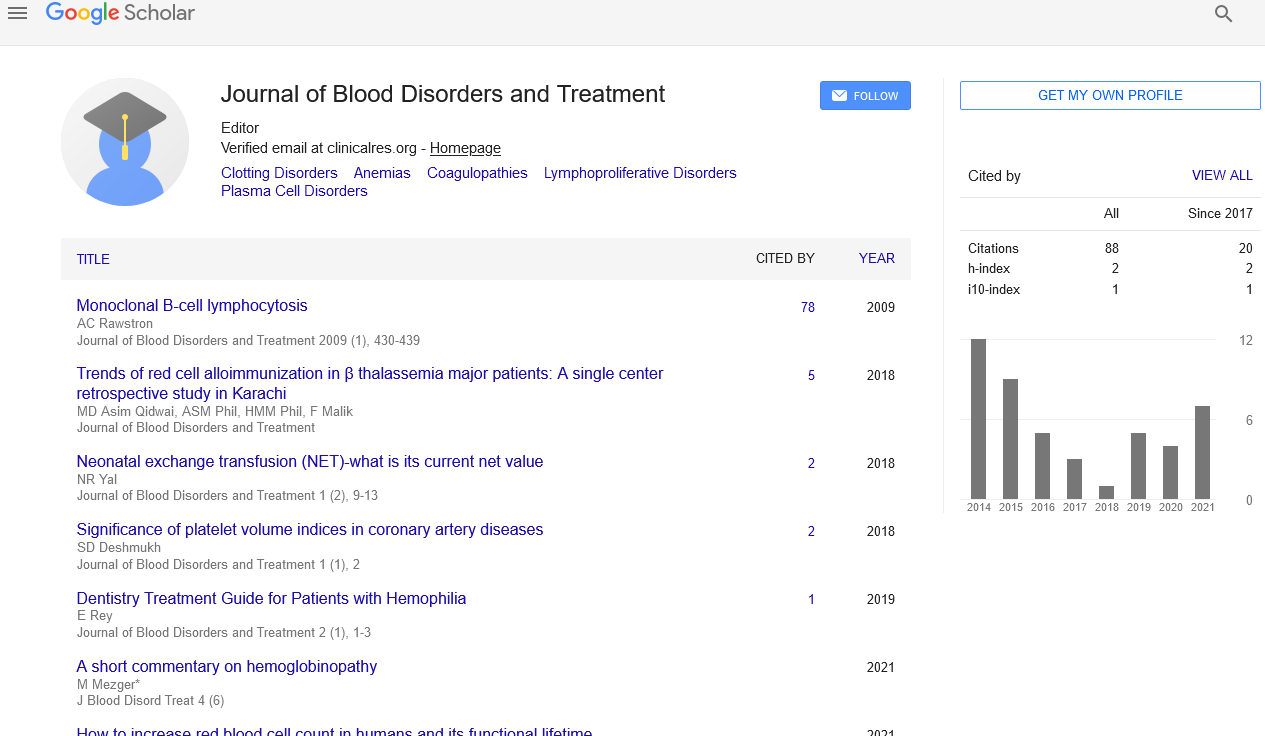Review on Acute Myeloid Leukemia
California.
, United States,Received: 02-May-2021 Accepted Date: May 15, 2021; Published: 22-May-2021
This open-access article is distributed under the terms of the Creative Commons Attribution Non-Commercial License (CC BY-NC) (http://creativecommons.org/licenses/by-nc/4.0/), which permits reuse, distribution and reproduction of the article, provided that the original work is properly cited and the reuse is restricted to noncommercial purposes. For commercial reuse, contact reprints@pulsus.com
Abstract
INTRODUCTION
Acute myeloid leukemia (AML) can be separated into two subtypes: once more, when it isn't brought about by chemotherapy or another previous hematological condition, and auxiliary, when it is gotten from such a condition. AML is a gathering of neoplastic issues portrayed by an expansion in the quantity of youthful myeloid cells in the bone marrow with or without contribution of the fringe blood. As a result, a bone marrow disappointment condition, delivering iron deficiency, granulocytopenia and thrombocytopenia, with its clinical indications described by dyspnoea and shortcoming, diseases and dying, is seen.
In the event that untreated, AML is typically lethal inside the space of weeks from the hour of finding. AML is all the more often seen in more seasoned grown-ups. The frequency in the US is 3.5 cases per 100 000, being higher in patients beyond 65 years old years contrasted and more youthful patients (15.9 versus 1.7, individually), and causes roughly 2.1% of all malignant growth passings in the US, with a yearly demise pace of 3.2 per 100 000 in 2007.Clinical assessment, including new biomarkers, treatment and visualization in patients with AML, has changed significantly in the course of the most recent twenty years. The clinician's test is to improve reaction and endurance, particularly in patients beyond 65 years old years, where the occurrence and chemoresistance are higher than in other patient gatherings [1].
Morphologically, AML impacts fluctuate in size from marginally bigger than lymphocytes to the size of monocytes or bigger. The cores are enormous in size, shifted fit as a fiddle and normally contain a few nucleoli. AML impacts express antigens discovered likewise on sound juvenile myeloid cells, including basic separation (CD) markers CD13, CD33 and CD34 Other cells markers are communicated relying upon the morphological subtype of AML and phase of separation square, for example, monocytic separation markers (CD4, CD14, CD11b), erythroid (CD36, CD71) and megakaryocytes markers (CD41a and CD61). Once in a while, AML impacts additionally co-express antigens confined to T or B cell heredities including Terminal deoxynucleotidyl transferase (TdT), Human leukocyte antigenantigen D related (HLA-DR), CD7 and CD19. Infrequently, the impacts can display morphologic and insusceptible phenotypic highlights of both myeloid and lymphoid cells that make it hard to arrange them as either myeloid or lymphoid in beginning. These cases are delegated blended phenotypic leukemia and typically forecast a more regrettable generally endurance [2].
AML is perplexing sickness with a different hereditary scene. The field is quickly extending with expanded comprehension of the science just as potential new medication targets. Regardless of our earnest attempts at focused treatment, it has become evident that solitary medication choices might be less inclined to prevail over different medication targets. Backslide sickness stays the most noteworthy reason for mortality after HCT. Immunotherapy is likewise an energizing new restorative methodology which may offer long haul solutions for backslid patients.
The aim of treatment is to actuate a enduring remission, characterized as the nonappearance of detectable cancer cells within the body, here have been strides to extend the viability of treatment regimens, resulting in expanded survival rates. Possible medications for intense leukaemia incorporate chemotherapy, steroids, radiation treatment, seriously combined medicines, focused on treatment or growth factors.
Diagnosing ALL starts with a careful therapeutic history, physical examination, total blood number, and blood smears. Whereas numerous side effects of ALL can be found in common ailments, persistent or unexplained side effects raise suspicion of cancer. Since numerous highlights on the restorative history and exam are not particular to ALL, encourage testing is frequently required. A huge number of white blood cells and lymphoblasts within the circulating blood can be suspicious for ALL since they show a fast production of lymphoid cells within the marrow [3].





